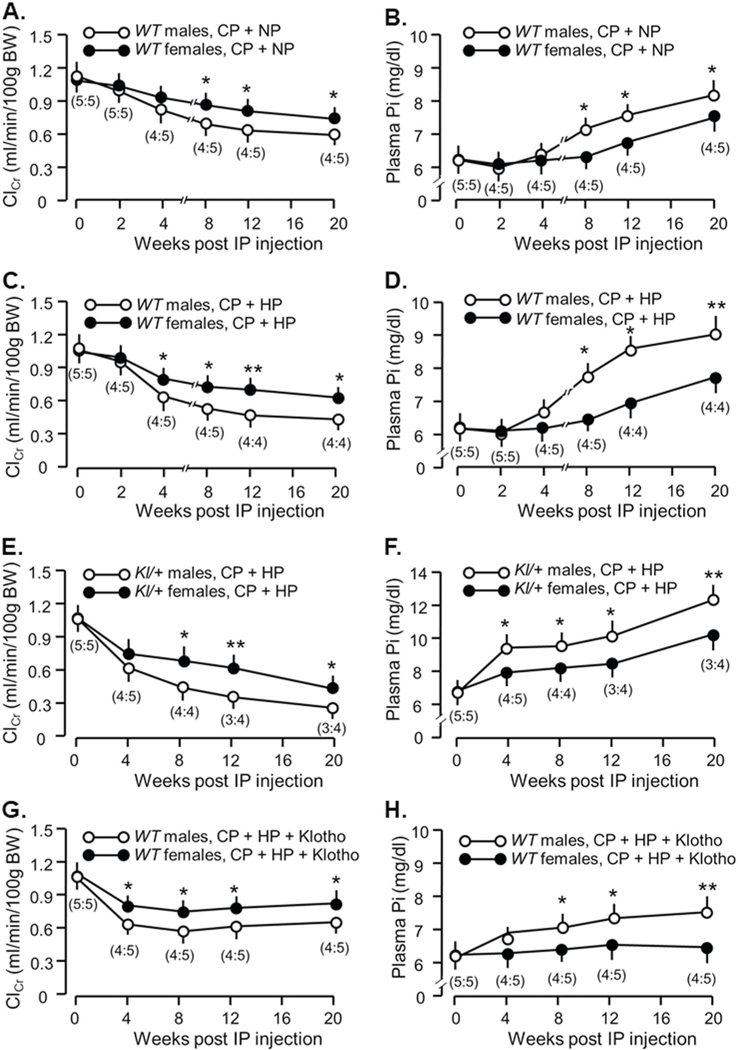Fig. 7.

Sexual dimorphism in CP-induced CKD progression and in the response to αKlotho treatment. WT mice at 3 months old were injected with CP (10 mg/Kg) or normal saline as vehicle (veh) followed by normal (NP) or high phosphate diet (HP, 2.0% Pi) for 18 weeks starting 2 weeks after CP injection. At 20 weeks after the injection, mice were sacrificed. a Creatinine clearance (ClCr) and b plasma phosphate (Pi) in male and female mice fed with normal Pi diet. c Creatinine clearance (ClCr) and d plasma phosphate (Pi) in male and female mice fed with high Pi diet. Mice with low levels of αKlotho (kl/+) at 3 months old were intraperitoneally injected with CP (10 mg/Kg), and fed high phosphate (Pi) rodent chow 2 weeks after the injection for 18 weeks. e Creatinine clearance (ClCr) and f plasma phosphate (Pi) in male and female Kl/+mice. WT mice at 3 months old were intraperitoneally injected with CP (10 mg/Kg) followed by feeding with high Pi diet in 2 weeks after the injection for 18 weeks. At 4 weeks after the injection, αKlotho protein was given through osmotic minipumps for 16 weeks. g Creatinine clearance (ClCr) and h plasma phosphate (Pi) in male and female WT mice. Data are expressed as means ± SD from each group and statistical significance was evaluated by one-way ANOVA followed by Student–Newman–Keuls post hoc test, and significance was accepted when *P < 0.05; **P < 0.01 between two groups at same time point. The number in brackets is male:female number in each group at different time point
